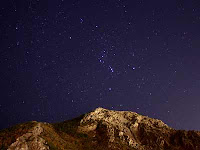If anyone out there has been checking this blog for the last 11 weeks, hoping to find something new, please accept my apologies. Blogging got pushed to the back burner by a combination of the November election, professional duties, holiday travels, and personal matters. In any case, Happy New Year!
Speaking of holiday travels, I again spent New Year’s weekend in remote Boulder, Utah, with a group of accomplished environmentalists. Couldn’t ask for a better setting, or better company, to start the year off right.
Besides enjoying the scenery and getting some exercise, we did a bit of work during our day hikes. On New Year’s Day we documented the existence of a new house that someone has illegally built on BLM land in the Grand Staircase-Escalante National Monument. I suppose the builder figured it would be easier to get forgiveness than permission. Let’s hope he gets neither.

Then on Saturday we helped Bill Wolverton in his ongoing war against invasive Russian olive trees in the Escalante canyons. Bill is a seasonal employee of the Glen Canyon National Recreation Area, and I’m pleased to report that after a decade of work he is winning the war--at least within the NRA boundaries, where he has cleared the Russian olive from the Escalante River canyon and nearly all of its tributaries. Let’s hope that the BLM, which manages the upstream portions of these canyons, will soon step up its weed eradication efforts to match those of the Park Service.
Our small project was merely to cut and burn some Russian olive that Bill had already killed some time ago. This is important not just for aesthetics but also to clear out the thorny brambles for the benefit of hikers and wildlife. First we had to hike through a couple miles of weed-choked canyon down to the NRA boundary, where Bill’s past efforts were immediately apparent. Still, there’s more work to be done, and we built two splendid bonfires to dispose of the cut logs and brush.

Returning to Boulder at nightfall, we were treated to a spectacular sky full of stars. So I quickly changed into dry socks, grabbed my camera and tripod, and ran back out to the road to take a few photos before moonrise (and supper). I first shot a photo of Orion rising and another of Cygnus (and the Milky Way) setting. Then glancing over at Jupiter, I saw a distinct glow around it and realized that, for the first time in my life, I was seeing the famous zodiacal light. Boulder must be one of the few inhabited places on earth where this faint band of light is still visible. I’m already making plans to go back for a star party in warmer weather.









